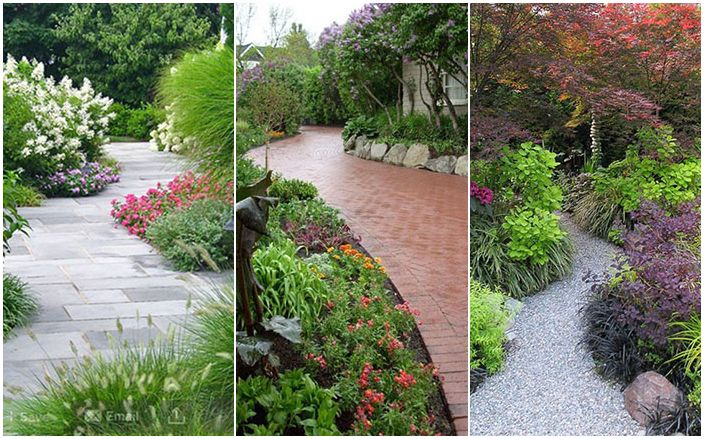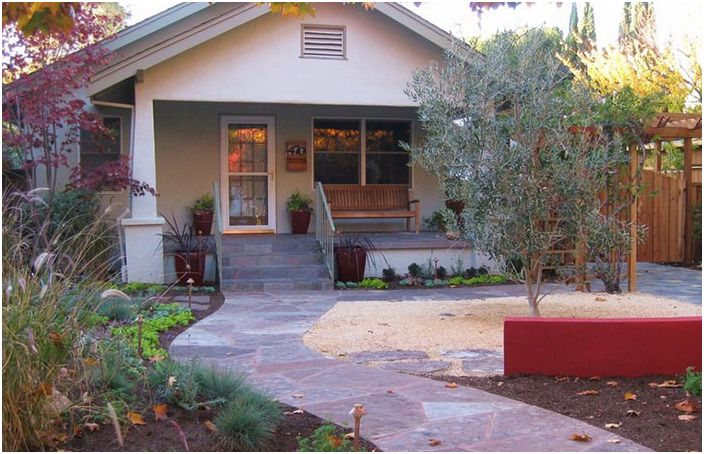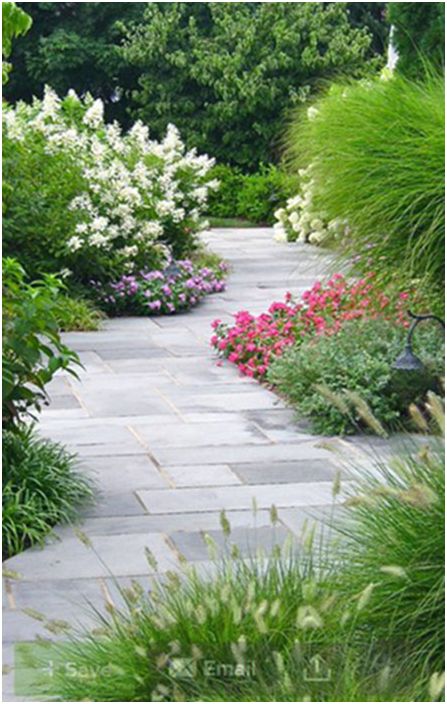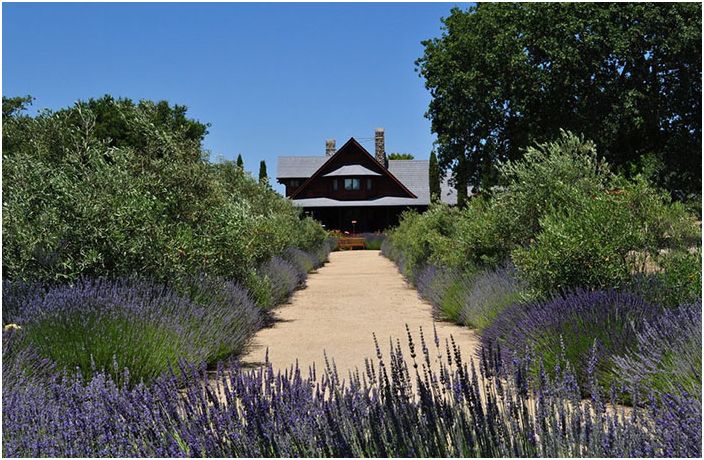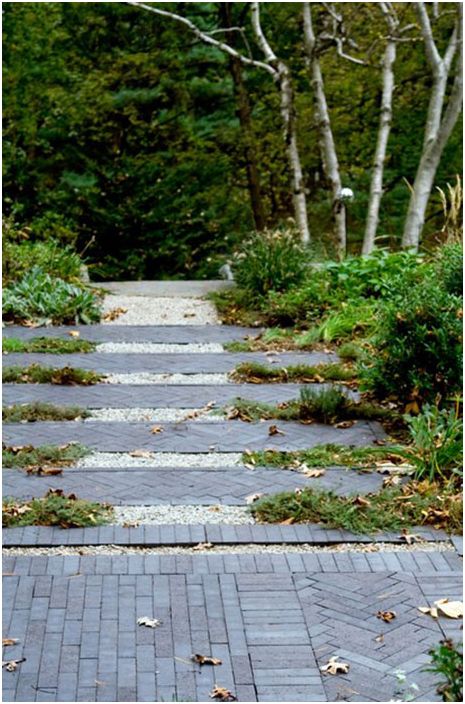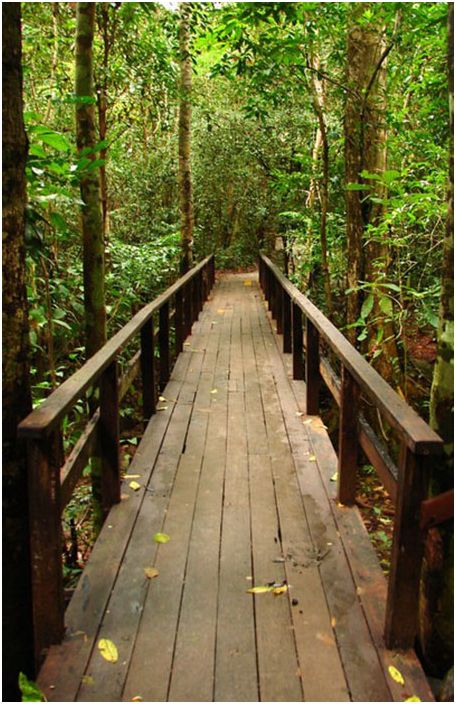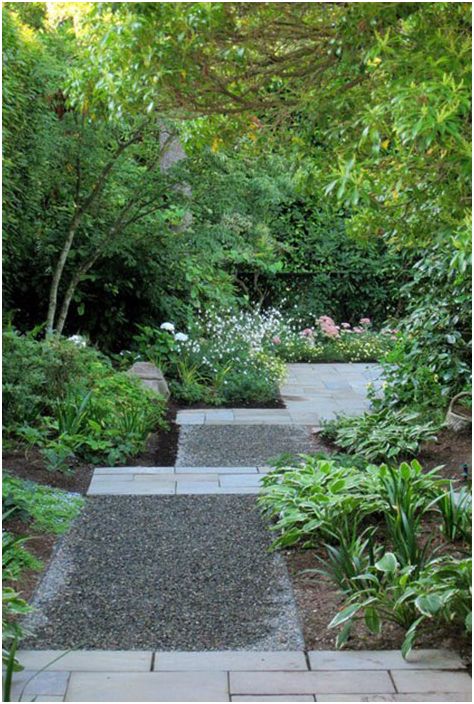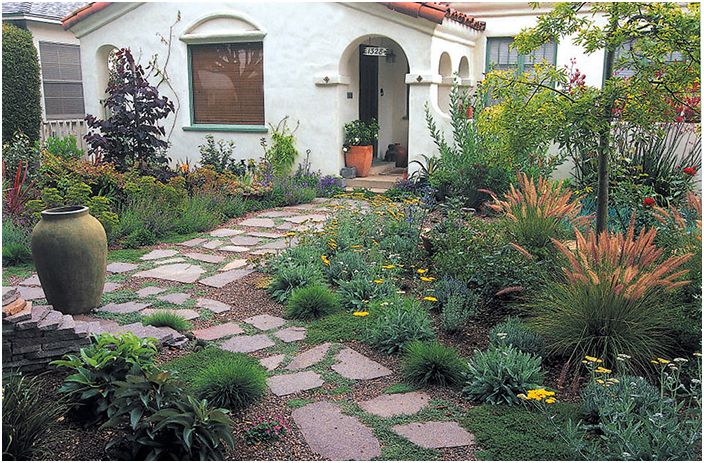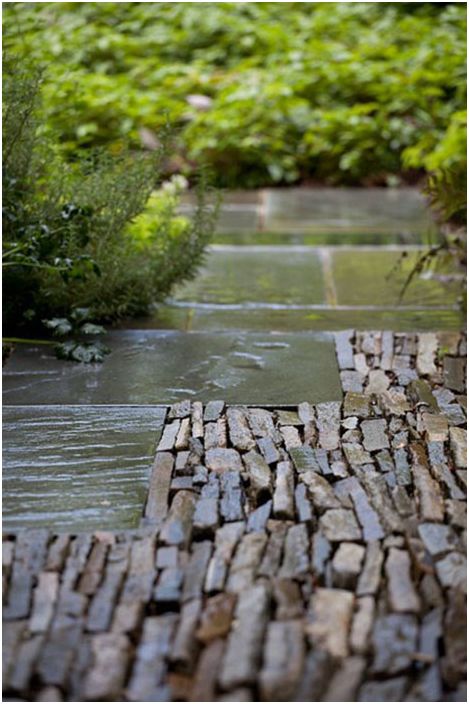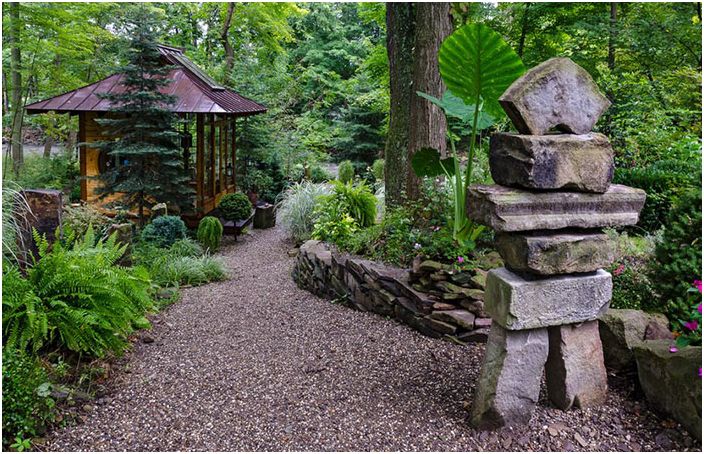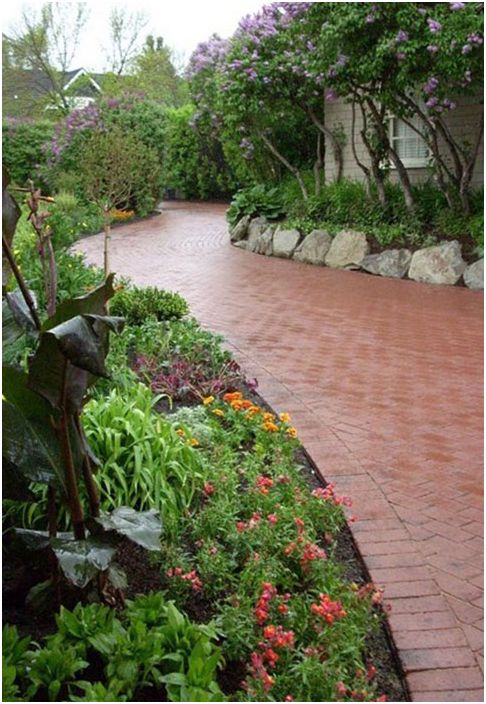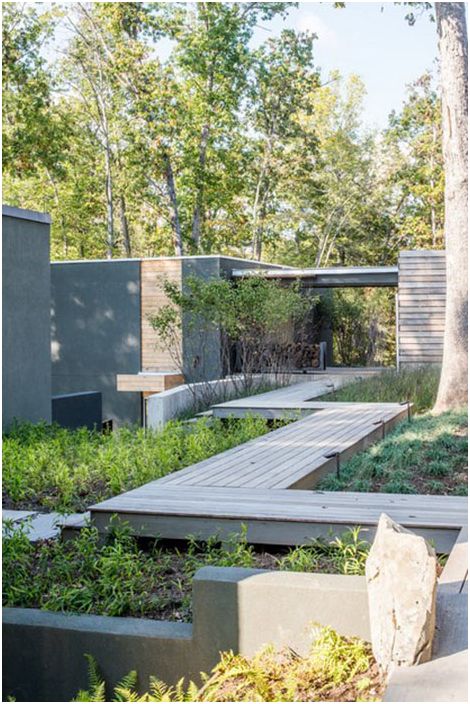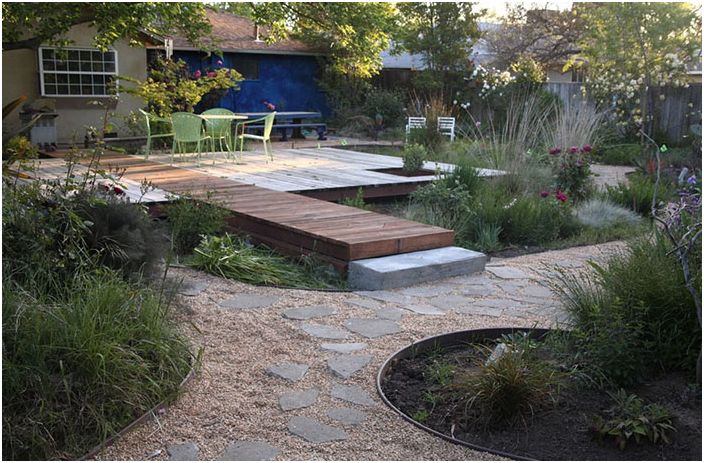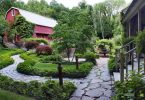Your own designer: original garden paths leading to a fairy tale
Garden paths, whether they are straight, which lead from street to house, or winding, along which you can walk in the garden, are always interesting. Perhaps because they are eye-catching due to the design, shape and materials from which they are made. The track can and should tell a story, awaken emotions, and inspire to explore the destination to which it leads.
Assess your capabilities
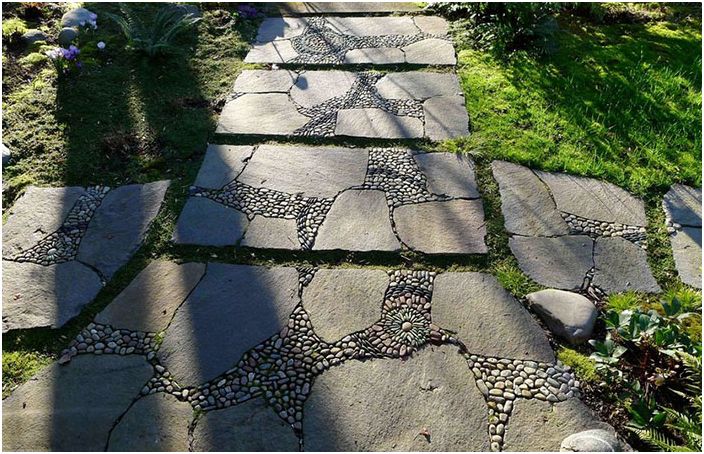
Path in the garden
No one doubts that any path should lead from point A to point B, but how boring, predictable or interesting this journey will be depends on its creator..
If you look at the track shown in the photo, then it immediately becomes clear what story she wants to tell. The straight lines of each section speak of a love of order, large stones establish a connection with nature, and the mosaic speaks of a love of art and a certain eccentricity of the owners of the garden. A good track will always make you fantasize. Conclusion one: if you want to tell a story about yourself, then start with the garden path.
Think about shape
Choosing the shape of the track
Form is the interpretation of lines, and any line is a universal language perceived by the brain, which then gives rise to emotion. That is why it is necessary to carefully consider what shape the garden path will be..
Serpentine
Serpentine
Serpentine evokes a sense of calm, as it is a natural and organic form. You mentally keep your gaze farther and farther, hoping to find out what is around the corner or bend. This path is suitable for those who have everything in the garden carefully thought out or divided into sectors that cannot be immediately identified visually.
Straight track
Straight track
A straight path is very practical as it will lead you straight to your home in a very fast and safe manner. A straight path is boring. But what distinguishes the track presented in the photo? First of all, the straight lines soften the lavender bushes that are planted along the length. Secondly, crushed granite looks organic with the landscape. Thirdly, it is quite wide, several people can walk along it at the same time, which means that an interesting conversation can take place.
Straight track
Here’s another straight path. It is distinguished by a variety of patterns of bricks from which it is laid. A person walking along it will certainly be interested in these geometric patterns, and the fact that the path consists of sectors stretching deep into the garden forms a connection with him.
Straight track
In this photo, there is a kind of bridge, it is straight, but thanks to the image as a whole and the proximity of the forest, it makes you fantasize and invent a story that the forest, the silent witness, could tell. The elongated configuration of the track makes you look into the distance, and the track seems to be longer.
Zigzag
Zigzag
Zigzag paths, yatsuhashi, are traditional elements of the Japanese garden. It is believed that the evil spirit cannot overcome the 900 corners, so this path is safe. The zigzag is a symbol of Buddhism and meditation, in addition, such a path slows down the movement of a pedestrian, which means that there will be time to admire the garden. This shape is often used in modern landscape designs, but it is suitable for a traditional garden too..
Consider track width
Choosing the width of the track
Traditionally, most paths should be at least 1.20 m wide so that two people can comfortably fit side by side on the path at the same time. Although this is only a recommendation, not a rule. When choosing a track width, think about what functional and psychological role it should play. The path, the width of which is larger than the traditional one, for example, 1.5-2.4 m, allows several people to walk side by side, which means that a conversation will surely start between them. In this case, it can still play the role of a place for entertaining guests with outdoor conversation and admiring the garden. Secondary paths in the garden may already be traditional, for example 60-90 cm, since they do not play an important role.
Selecting material for a track
Concrete path
Concrete
Concrete has long been considered the most suitable material for garden paths. It is very easy to use and durable. Concrete allows you to create as it takes any shape. It can be tinted while pouring or painted later..
A rock
Stone path
A stone can create a different atmosphere, it all depends on the way it is used, shape, color and texture. You can combine different types of it. Stone is a natural material, which means it is quite expensive, but it works in any landscape design.
Gravel
Gravel path
People have different attitudes towards gravel and its functionality. Many people imagine a country holiday camp or countryside. Gravel is not always in place, for example, if the garden is located on a hill, or one of the family members moves in a wheelchair. Although gravel is crushed stone, it is a natural material that blends in with the landscape..
Brick
Brick path
Brick is the traditional choice for garden paths in the US and Europe. Although it has little to do with nature, these paths mostly help brick houses blend into the landscape. It can be placed dry in sand, filled with mortar, or placed on top of other materials. If you lay it down correctly, then such a track will last a long time..
Wood
Lumber, be it sturdy wood or pressed planks, is a good choice for garden paths. They prevent pedestrian contact with the ground, which is very good during bad weather. The tree can be varnished or painted, which is available in many colors, which will have a positive effect on the overall appearance of the garden..
Mulch flooring
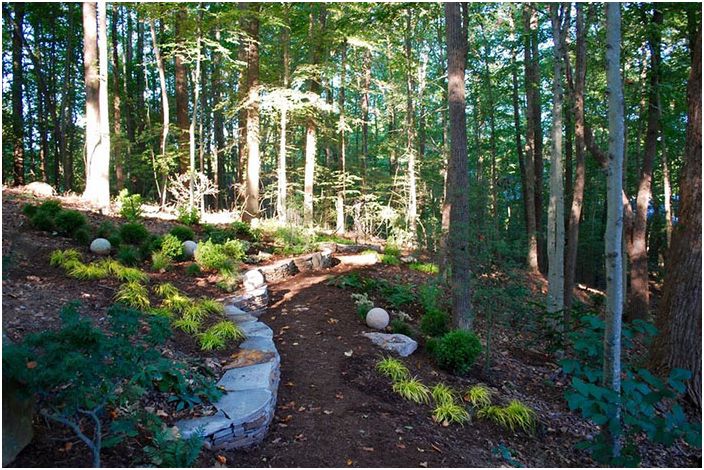
Mulch flooring
Nothing is more soothing than walking along paths of leaves and bark in the garden. Mulch is an inexpensive, versatile material that can be easily harvested in a garden or forest. It can consist of wood and metal shavings, leaves and dry grass. True, she needs updating from time to time.
Grass
Path on the grass
Few think of turf when it comes to decking for garden paths, but it is the most environmentally friendly material for this purpose. It looks very neat and is organically combined with flower beds. Impromptu paths are easy to make, just take a walk with a lawn mower.
Combining different materials
Combining different materials
To create more interesting looks and ensembles in architectural and natural terms, you can combine a variety of materials when building garden paths. The main thing is to remember four important criteria: size, shape, color and texture. If you neglect one of them, the result will be disastrous. It is best to choose two materials and add others as needed without disturbing the balance.
In addition to the paths, in the garden it is imperative to equip several benches, where you can sit quietly, chat and breathe air. 10 Great Ways to Install Built-in Benches.

